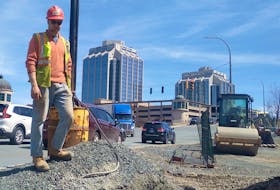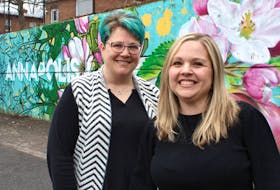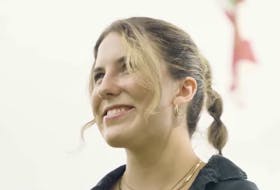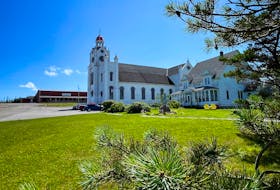A Cape Breton teen has been growing pumpkin plants this year with organic charcoal called “biochar” in a study that could help reduce the carbon emissions of crab shell waste and boost plant growth.
“As we all know, climate change is something very real that is happening around us,” said 16-year-old Marissa Cox of Sydney Forks, N.S., who is doing the project as part of a youth action cohort initiative. “The future is in the hands of the youth, so think it's important for us to be aware of these things, to research and to learn.”

During a science fair project last year, with the help of biochar developer Stephanie MacQuarrie, a professor at Cape Breton University, she demonstrated that biochar was more favourable than lime for growing barley. Biochar is created by burning crab shell waste within an oxygen-deprived environment at high temperatures.
“Approximately one-third of the crab goes to waste because it's the meat that is most desirable,” she said. “So, the rest of the crab shell is waste.”
The shells have a high volume of calcium carbonate, or limestone, and the nutrients can increase the pH levels of soil for better growth. Biochar also has potential uses in water filtration, environmental remediation and cosmetics.
Cox decided to connect with MacQuarrie again and study the effects of biochar as an agricultural soil amendment compared to lime as part of her project with the Nova Action cohort. The findings could be beneficial for the environment and save money for local companies such as Louisbourg Seafoods Ltd., a local seafood harvesting business that MacQuarrie obtains snow crab waste from.
“When you turn organic matter into biochar, it sequesters all the carbon into it,” said Cox. “So all the carbon that would normally get released when something decomposes, it’s all sequestered inside of the biochar and it can stay there for hundreds of years.”

Along with the carbon emissions from fuel and decomposing crab waste, shipping it can be costly.
“If it were converted into biochar, that would be a great alternative to sending it to (an organic landfill in) Guysborough County,” said Cox.
Originally, Cox had intended to study biochar within a commercial agricultural setting at a local farm, but limited access to the lab at Cape Breton University due to COVID-19 closures meant that they could not produce the volume of biochar needed. Instead, she improvised by growing pumpkin plants at home with a smaller amount obtained by MacQuarrie.

Currently, Cox is analyzing her plants’ growth, testing the pH levels and comparing them to when she first planted them. She will also be interviewing people in the crabbing and biochar industries to approximate the cost of making biochar and evaluating it against lime. The results will be compiled into a paper.
Nova Action, a project of Coastal Action, is a cohort of 10 Nova Scotia youth tackling environmental issues from within their communities. Since January, they have been experimenting and researching, and next year they plan to present their findings through outreach and education. Nova Action youth receive funding and mentorship for their projects through the cohort, and when things resume to normal, travel and networking opportunities.
Cox, who learned about it from her teacher, was most attracted to the advocacy component of the cohort, where she will share her project results with the public through an outreach plan. It involves creating a website and educational opportunities.
“I think the Nova Action cohort is really amazing, because it's youth who are taking control,” she said. “We’re just trying to do something that we are passionate about and trying to make a difference, however big or small it may be. It’s preparing us for the future and what we may do.”
Cox enjoys doing science projects and is thinking about a science degree at Cape Breton University. Someday she hopes to study dentistry and orthodontics.










